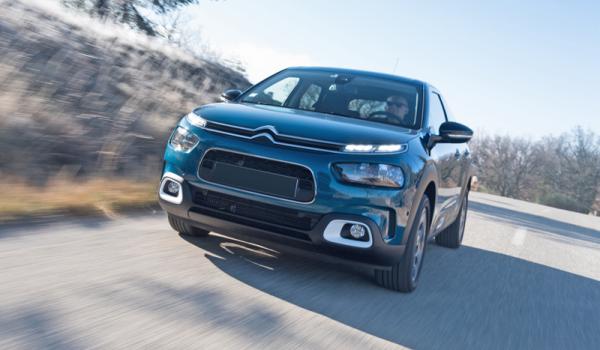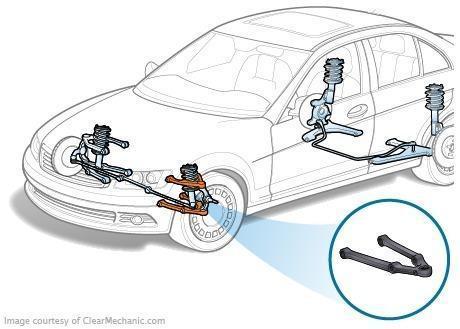
Test drive Citroën C4 Cactus against Renault Mégane: not only design

Two French models with individual style at a reasonable price
Everywhere around us is full of inconspicuous compact cars - so it is in France. Now with the new Citroën C4 Cactus 4 Renault, local manufacturers Mégane are attacking established competitors with bespoke alternatives that differ from the masses in more than just design.
Do you have certain preferences for the French lifestyle and are you looking for an alternative to the usual mass-produced compact class cars? Welcome to the first comparison test of the new Citroën C4 Cactus with its compatriot Renault Mégane - both models have petrol versions with around 130 hp. First of all, we note that French cars can be an attractive alternative for buyers looking for a low price.
Thus, imperceptibly, we have already entered the analysis of price lists. They are confusing - whether you're diligently browsing them or tweaking models online. Renault, for example, took the test car's Intens package as a base and created a special Limited version with a Deluxe package, which makes the Mégane cheaper by about 200 euros with almost identical equipment. Among other things, there's standard dual-zone automatic air conditioning and a seven-inch touchscreen on board, as well as digital radio and smartphone connectivity - so you can save a little more than an R-Link 2 system with navigation software.
Helpful additions for the test car are the Safe package with adaptive cruise control and emergency stop assist (€ 790) and the 360-degree parking assistant for € 890. For another € 2600, you get not only the dual-clutch transmission, but also the newer 1,3 hp 140-liter engine that it comes with. Mercedes Class.
While the Mégane still offers many options for upgrades, the C4 Cactus is in tests with a turbo petrol engine and the latest Shine equipment, and at 22 euros it is exactly 490 euros cheaper than the Renault model. In addition, it offers as standard an automatic emergency call system in the event of an accident, as well as a seven-inch screen navigation that combines additional functions into virtually identical packages, which are often several hundred euros cheaper than Renault.
Savings at Citroën
If you order a Cactus with an automatic transmission, you will have to settle for less power (110 hp), but the surcharge is only 450 euros. Citroën has added a lot more to its support systems than in the previous version. Traffic sign recognition, Lane Keeping Assistant, blind spot warnings and driver fatigue cost 750 euros in total. However, the price list completely lacks modern LED lights and cruise control with distance adjustment.
In return, you can invest a certain amount in colorful or luxurious accessories. Because even though the Cactus has lost its characteristic bumps as a result of the facelift, it can be tuned in much more multi-color than the silver / black test car. And with the Hype Red interior with a red dashboard and light leather upholstery (990 euros), you can feel a touch of aristocracy here.
This, at least to some extent, distracts from the smaller cabin space. Both front and rear, the C4 seats passengers in extremely soft, comfortable upholstered seats, but the sense of space is rather limited due to the body width of only 1,71 m (outside) and the wheelbase of just 2,60 m. In addition, the panoramic roof (490 Euro) significantly reduces the headroom of the rear passengers. Numerous, partially rubberized small storage areas are larger. However, oversized luggage needs to be lifted above the high rear sill to fit in the deep, almost inflexible trunk. At a volume of 358 to 1170 liters, it absorbs less than the Mégane's cargo hold (384 to 1247 liters).
And in the Renault model, the rear seat can only be folded in a ratio of 60:40, which also gives a step. In return, the car can take on more than half a ton of payload, and the C4's payload capacity is just under 400kg. Added to the more spacious interior are comfortable sports seats in leather and suede, providing all travelers with good lateral support. With the exception of complex multimedia menus, function control is simpler than in the C4 thanks to individual air conditioning controls and neat steering wheel buttons. In addition, the digital instrumentation on the instrument panel not only informs the driver in more detail, but can also be customized.
On the go, Mégane offers many adjustment options: in addition to the response of the accelerator pedal and the engine, you can also adjust the steering system. Regardless of the driving mode chosen, the Mégane is the more dynamic of the two vehicles.
Dynamically comfortable
Thanks to the direct steering and tilt of the lower body during rapid changes of direction, it provides more pleasure when driving on a secondary road without losing suspension comfort. The Mégane absorbs bumps more confidently than the C4, while the 1,3 ton four-cylinder shows a bit of fatigue before retirement due to the adoption of the WLTP standard. In addition, in the test, it consumes an average of 7,7 l / 100 km, which is 0,8 liters more than the Citroën engine.
The C4's lively three-cylinder turbocharger, with its 230Nm, feels more nimble than the two engines. It sprints to 100 km/h lighter with the over 100 kg Cactus half a second faster at 9,9 seconds. And when stopped at a speed of 100 km / h, the Citroën model freezes in place after 36,2 m - more than two meters earlier than the Renault representative.
However, with a more energetic driving style, the C4 begins to growl in the front wheels, and at high cornering speeds its body leans noticeably before the ESP system rudely prevents attempts to leave the track. The standard comfort suspension isn't very convincing either - because while the Cactus glides smoothly over long waves on pavement, short bumps can be felt even in direct steering.
As a result, the more balanced Mégane clearly won the test duel. But Cactus has more faithfully conveyed the French sense of life over time.
Text: Clemens Hirschfeld
Photo: Ahim Hartmann

